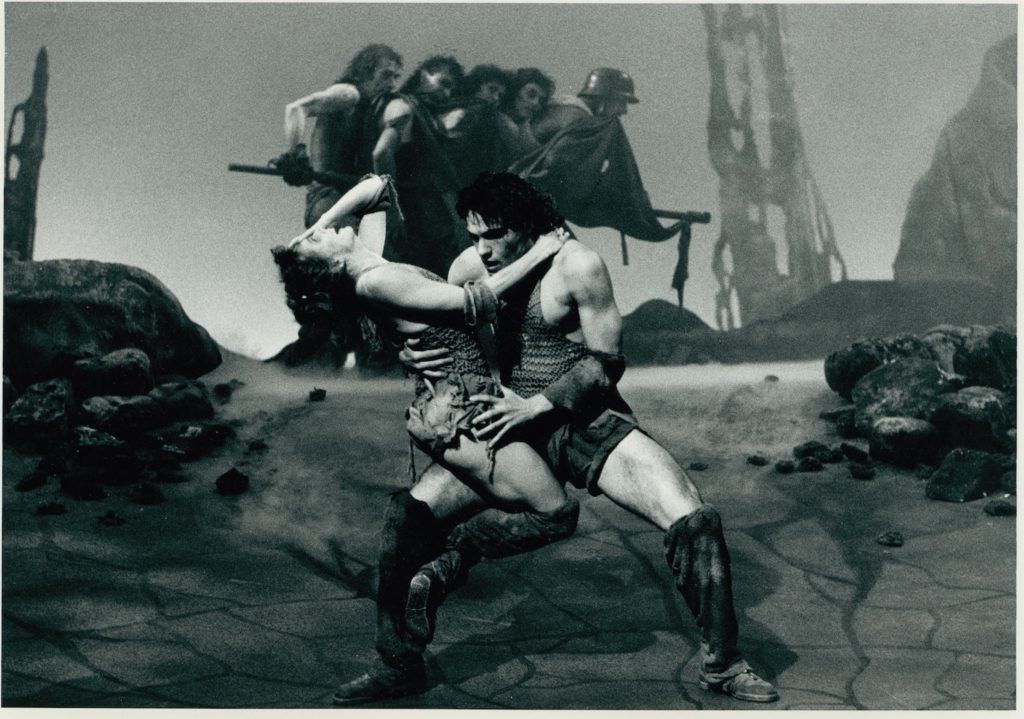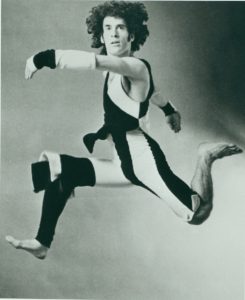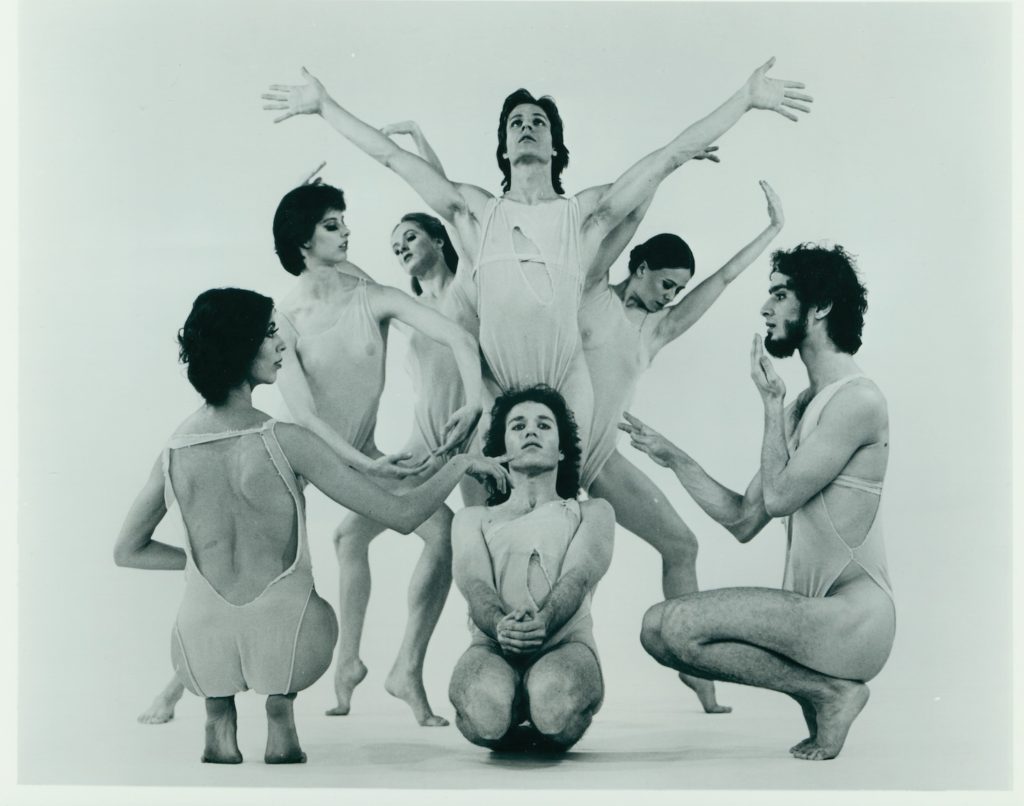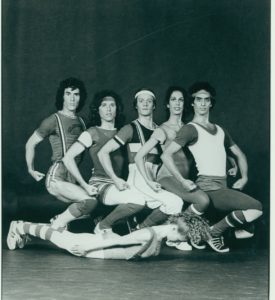Danny Grossman: A dancer for life, remembered - Vancouver Ballet Society
- Home
- Features 2020 - 2023
- Danny Grossman: A dancer for life, remembered

By Michael Crabb
Danny Grossman, once hailed as among Canada’s boldest, most innovative, and prolific choreographers, died of heart failure in Toronto on July 29 at the age of 80. During his long career Grossman created a total of 67 dances, mostly for his own Danny Grossman Dance Company, founded in 1978, but also, whether as commissions or remounts, for the National Ballet of Canada, Les Grands Ballets Canadiens, Toronto Dance Theatre, and the Paris Opera Ballet. His choreography ranged from solos and small ensemble works to such large-scale pieces as 1986’s National Ballet commission, Hothouse: Thriving on a Riff. The company toured it to the Metropolitan Opera House in New York.

Grossman’s unmistakable choreographic vocabulary was founded in a solid modern dance technique but evolved out of his personal physicality. Grossman did not have the conventionally “ideal” dancer’s body and the quirky, angular, and dynamically punctuated character of his work reflected this.
His personal values were also very apparent in works that spoke to Grossman’s passionate concern for those on society’s margins. One of his most famous works, memorably filmed and nationally broadcast, was Endangered Species (1981), a viscerally unsettling indictment of war.
Grossman also had a wry sense of humour and a gift for satire. Early in his choreographic career he took a small group of dancers on tour in the United States. The program included National Spirit (1976), his irreverent send-up of bombastic patriotism. It so outraged a school principal in Dade County, Florida, that Grossman’s troupe was run of out of town. The abrupt ejection pleased him no end. He liked ruffling feathers.
Other works explored his interest in the twists and sometimes ugly turns of human sexuality. Grossman, who was gay, was a lifelong proponent of sexual freedom. His message was aptly encapsulated in the title of one of his most popular works, 1981’s Nobody’s Business.

Daniel Williams Grossman was born September 11, 1943 in San Francisco, the child of progressive, social activist parents. He relocated to New York in his late teens. In 1963 he joined the Paul Taylor Dance Company, then less than 10 years old but already hailed as a trail-blazing modern dance troupe. Grossman, then billed as Danny Williams, remained with Taylor for a decade and was acclaimed as one of the company’s finest dancers.
He moved to Toronto in 1973 to teach at York University and to perform as a guest with Toronto Dance Theatre. Grossman launched his choreographic career in 1975 at a student/faculty concert at York University with Higher, an almost acrobatic courting duet for himself and TDT member Judy Hendin involving a step ladder and two stacking chairs. It was an immediate hit, rapidly followed over the next few years by such works as Triptych, Inching, and Bella, a whimsically romantic and enduringly popular duet co-created and originally performed in 1977 by Grossman and Canadian dancer/choreographer Judy Jarvis. That same year, Grossman choreographed a solo for himself that is widely regarded as a modern dance masterpiece: Curious Schools of Theatrical Dancing.

This early burst of creativity quickly established Grossman as one of Canada’s leading choreographers. With never more than a dozen core dancers, Grossman’s company was a flexible, mobile performing unit, presenting countless home seasons and touring across Canada, the United States, Mexico, Central and South America, Israel, Cuba, the United Kingdom, and many European countries. Grossman chose his dancers carefully and invested heavily in their artistic growth. They responded to his commitment by staying a long time, in some cases for almost their entire performing careers.
Grossman’s stature as a major creative force was solidified during the 1980s by such works as Genus (1984), originally made for the Paris Opera Ballet; Ces plaisirs, Divine Air, Magneto Dynamo, and Scherzi (all from 1985); and later La Valse (1987) and the very personal, award-winning solo, Memento Mori (1988).
His creative output continued throughout the 1990s and included collaborations with such fellow choreographers as Indian classical kathak dance artist Rina Singha and classical ballet-trained Lawrence Gradus. Grossman’s insistence on the importance of maintaining a modern dance heritage led him to introduce significant works by other choreographers into his company’s repertoire.
As public funding agencies’ priorities shifted, along with broad aesthetic changes within contemporary dance, Grossman’s popularity waned and, facing the inevitable, he closed his company in 2008 with a gala farewell entitled Vanishing Acts.

The years that followed were difficult for Grossman, and he drew back from a dance community that he felt had turned its back on him. At the same time, he focussed on the documentation of his artistic legacy and allowed his work to be taught and performed in professional training academies.
Grossman received numerous performing arts awards during his career, culminating in 2018 when he became an inaugural inductee of the Dance Collection Danse Hall of Fame. The same year, to mark his 75th birthday, Grossman presented a full evening of recent works, including three world premieres at the Citadel in Toronto. With the help of former company dancer Eddie Kastrau, Grossman’s longtime artistic associate, he completed a video creation shortly before his death. The title Grossman chose could stand as his epitaph: Dancer For Life.

